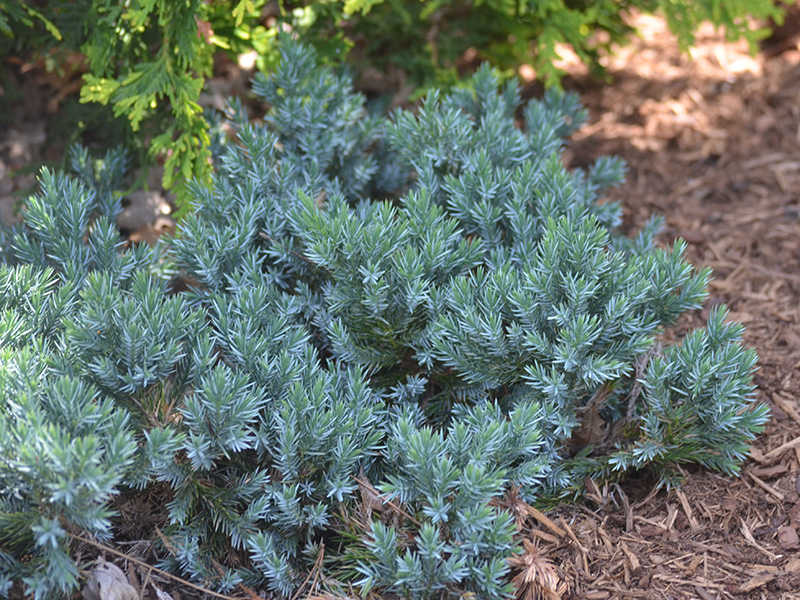| General Description | Juniperus squamata 'Blue Star' is a ground-covering juniper with shaggy, cinnamon bark and pretty blue, star-shaped needles. |
| ID Characteristic | Pale blue-green foliage, unique among the conifers. Needles form a star-shape. |
| Shape | Bushy, low-mounded hemispherical. |
| Landscape | Can be grown as ground cover, over slopes and where runoff is a problem. Makes a striking contrast among other conifers. Can be trained to grow like a tree or rounded, squat shrub, small compact bush or along retaining walls. |
| Propagation | By ripe cuttings taken in late autumn through winter. Also by roots held in a humid cold frame or soft cuttings taken in the summer and placed over bottom heat and under a misting system. |
| Cultivation | Grow in full sun to part shade, in soil with a pH range of 5.5 - 8.5, containing mostly sand to clay loam. Fertilize yearly, avoiding the late growing season. Adaptable to both dry and moist growing conditions, mulch is recommended, AHS heat zone 1 - 5. |
| Pests | Possible problems include: leaf miners, bark beetles, scale insects, aphids, mites, caterpillars, bagworms, phomopsis twig blight, gymosporangium rust, dieback, canker, lesion nematodes, brown felt blight, and heart and wood rots. |
| Notable Specimens | The Gardens of Fanshawe College (Conifer Garden), London, Ontario, Canada.
|
| Habitat | Horticultural origin. |
| Bark/Stem Description | Exfoliating, shaggy cinnamon bark, moderately fissured. |
| Leaf Description | Needles are awl-shaped and silver blue, in whorls of 3 radially arranged around branches so that they look like stars. |
| Fruit Description | Black, insignificant ornamentally. Berry-like female cones containing a single seed. |
| Colour Description | Silver-blue. |
| Texture Description | Extremely fine, delicate and sharp. |

